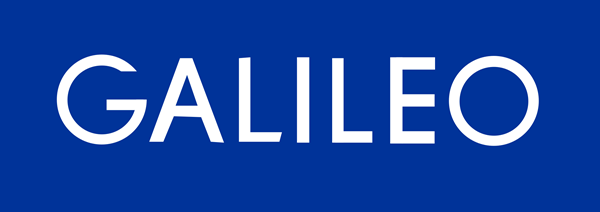Galileo is Europe’s own global navigation satellite system, providing a highly accurate, guaranteed global positioning service under civilian control. It is inter-operable with GPS and GLONASS, the two other global satellite navigation systems.
By offering dual frequencies as standard, Galileo will deliver real-time positioning accuracy down to the meter range. It will guarantee availability of the service under all but the most extreme circumstances and will inform users within seconds of any satellite failure, making it suitable for safety-critical applications such as guiding cars, running trains and landing aircraft.
ESA’s first two navigation satellites, GIOVE-A and –B, were launched in 2005 and 2008 respectively, reserving radio frequencies set aside for Galileo by the International Telecommunications Union and testing key Galileo technologies.
Then on 21 October 2011 came the first two of four operational satellites designed to validate the Galileo concept in both space and on Earth. Two more will follow in 2012. Once this In-Orbit Validation (IOV) phase has been completed, additional satellites will be launched to reach Initial Operational Capability (IOC) around mid-decade.
Galileo services will come with quality and integrity guarantees which marks the key difference of this first complete civil positioning system from the military systems that have come before.
A range of services will be extended as the system is built up from IOC to reach the Full Operational Capability (FOC) by this decade’s end.
The fully deployed Galileo system consists of 30 satellites (27 operational + 3 active spares), positioned in three circular Medium Earth Orbit (MEO) planes at 23 222 km altitude above the Earth, and at an inclination of the orbital planes of 56 degrees to the equator.
Why GALILEO?
GALILEO is to be the one and only European global navigation satellite system. Up to now, GNSS users in Europe have had no alternative other than to use American GPS or Russian GLONASS satellite signals. Yet the military operators of these systems can give no guarantee to maintain uninterrupted service.
Meanwhile, satellite positioning has already become the standard and essential tool for navigating. If GNSS signals were switched off tomorrow, ship and aircraft crews around the world would be hard-pressed to revert to traditional navigation methods. As the use of satellite navigation spreads, the implications of signal failure become even greater, jeopardising not only the efficient running of transport systems, but also human safety.
As far back as the early 1990s, the European Union saw the need for a European-controlled global satellite navigation system. The decision to build one was taken in the spirit of other well-known European endeavours, such as the Ariane launcher and Airbus.
European independence is the chief reason for taking this major step. But, by being interoperable with GPS and GLONASS, GALILEO will also be, in a very real way, the new cornerstone of the global navigation satellite system (GNSS). This worldwide system will henceforth be under civilian control. And with its full complement of satellites, more than the current GNSS systems, GALILEO will allow positions to be determined accurately even in high-rise cities, where buildings obscure signals from today’s satellites.
Galileo will also offer several signal enhancements making the signal more easy to track and acquire and more resistant against interference and reflections. European GNSS will deliver much more precise and much more reliable services than the American and Russian systems. This means GALILEO and EGNOS will make possible a whole new and virtually limitless range of ‘reliability-critical’ services, applications and business opportunities.
By placing satellites in orbits at a greater inclination to the equatorial plane, GALILEO will also achieve better coverage at high latitudes, making it particularly suitable for operation over northern Europe, an area not well covered by GPS.
So, with GALILEO, Europe will be able to exploit the opportunities provided by satellite navigation to a much fuller extent than currently possible. As a consequence, European GNSS receiver and equipment manufacturers, application providers and service operators will all benefit from novel business opportunities.

